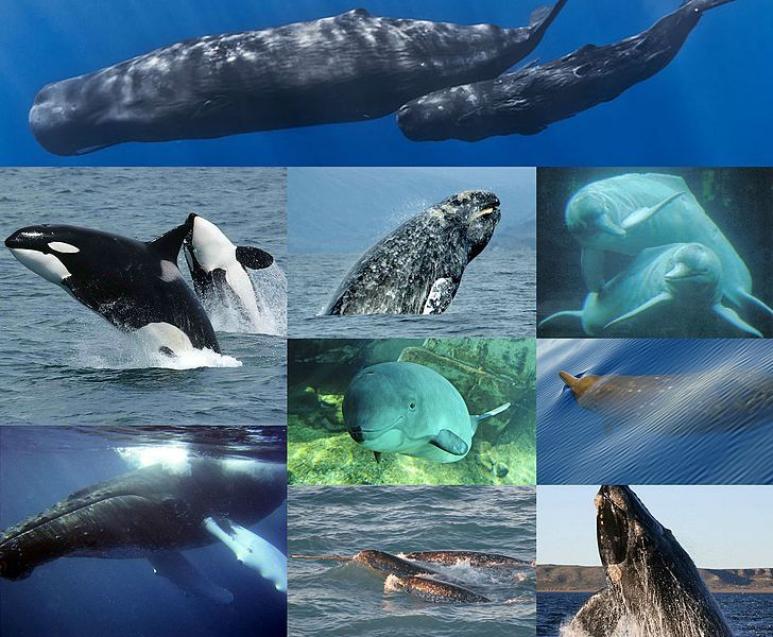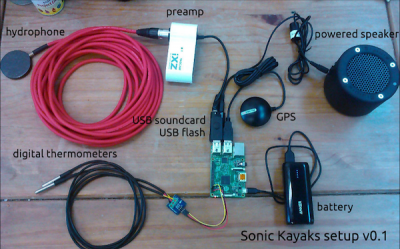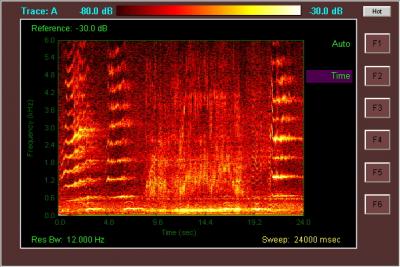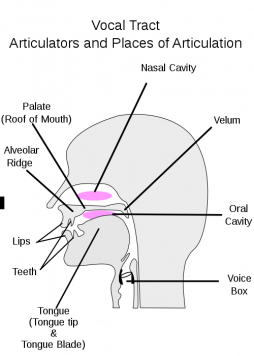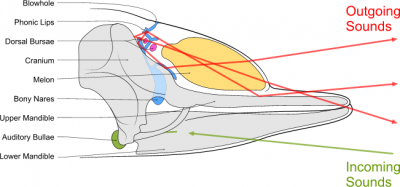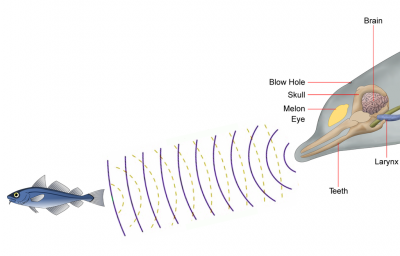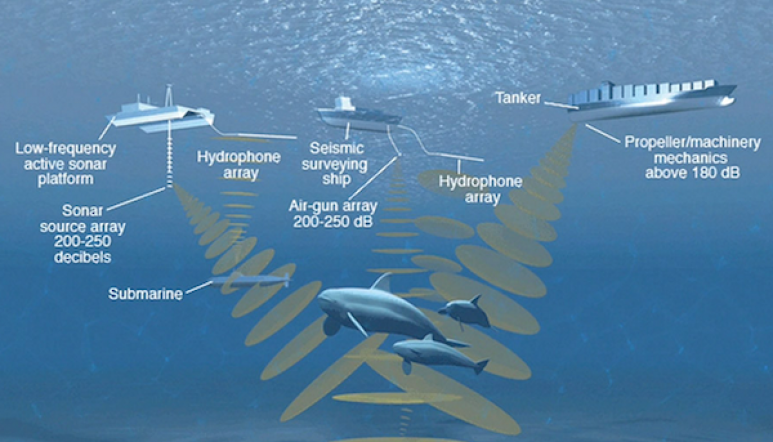Information Processing
Clarification Statement: Emphasis is on systems of information transfer.
Assessment Boundary: Assessment does not include the mechanisms by which the brain stores and recalls information or the mechanisms of how sensory receptors function.
Information Processing
Fig. 1. Animals, such as humans, are exposed to various stimuli and that information is processed in the brain.
Image courtesy of FreePik
An organism’s ability to sense and respond to its environment enhances its chance of surviving and reproducing. Animals have external and internal sensory receptors that detect different kinds of information, and they use internal mechanisms for processing and storing it (Fig. 1). Each sensory receptor responds to different inputs, such as electromagnetic, mechanical, or chemical. Some sensory receptors respond by transmitting impulses that travel along nerve cells. In complex organisms, most such inputs travel to the brain, which is divided into several distinct regions and circuits that serve particular roles. For example, some functions include visual and auditory perception, interpretation of information, guidance of motor movement, and decision making. In addition, some of the brain’s circuits give rise to emotions and store memories. Different organisms exhibit an array of sensory functions that vary in complexity. For example, marine mammals may process sounds differently than a marine invertebrate, like a sea urchin. Cetaceans, a group of marine mammals that include both baleen and toothed whales, use sounds as a means of communication (Fig. 2).
Fig. 2. Cetaceans are a diverse group (about 89 species) of aquatic mammals that are further divided into toothed and baleen whales.
Pictured here clockwise from top: sperm whale, Amazon river dolphin, Blainville's beaked whale, southern right whale, narwhal, humpback whale, killer whale, gray whale and harbor porpoise.
Image courtesy of Wikimedia Commons
Studying Underwater Sounds
Scientists began developing technology to listen to sound underwater in the 1920s (Fig. 3). These devices, called hydrophones, are still the main instruments used to listen to and record underwater sounds today (Fig. 4).
Fig. 3. A boat launches the laying of the cable from hydrophone to the shore station for radio acoustic ranging operations.
Image courtesy of NOAA
Fig. 4. Modern hydrophones can be adapted to be used on Kayaks, such as this one pictured here.
Image courtesy of Flickr
Fig. 5. Sound spectrogram illustrating the range of frequencies in a humpback whale song.
Image courtesy of Spyrogumas, Wikimedia Commons
Computer programs have been developed to help deconstruct the complex vocalizations made by marine mammals. For example, bioacoustic software programs create spectrograms that allow researchers to visualize the composition and patterns of individual male humpback songs (Fig. 5). Researchers record an individual’s song, and keep track of that individual over many years in order to better understand the reasons behind the vocalizations.
Additional Resources
|
Marine Mammal Communication
Fig. 6. Anatomy of sound production in humans.
Image courtesy of Tavin, Wikimedia Commons
The most effective means of communication in water is sound. Sound travels over long distances and can move 4.5 times faster in water than in air. Many marine mammals have adaptations for producing and receiving sounds underwater. Sounds are generated when pressure waves travel through air or water. In humans, sound is generated when air is expelled from the lungs and moved through the larynx. The vocal cords in the larynx, along with the throat, tongue, lips, and teeth, change the sound into different vocalizations (Fig 6). The mechanism of sound production in cetaceans is complex and still being studied.
Fig. 7. Anatomy of underwater sound production in an odontocete whale
Image courtesy of Emoscopes, Wikimedia Commons
Unlike with humans and other marine mammals, cetaceans do not need to exhale air in order to produce sound. Odontocetes, the toothed whales, use echolocation, generating clicks, whistles, and pulses in the nasal system. Mysticetes, the baleen whales, produce very low frequency sounds similar to groans, thumps, moans, and pulses. Cetaceans do not have an external ear structure to receive sounds and no opening to the ear canal. Scientists have evidence that sound vibrations pass through the skin and then are focused through the bones and fats in the skull to the inner ear (Fig. 7).
Dolphin Echolocation
Fig. 8. When a toothed whale, such as a dolphin, sends out a sound, it recieves an echo back to interpret the information ahead.
Image courtesy of Wikimedia commons
Echolocation, or biological sonar, is used by mammals, like bats and toothed whales, to process information about their environment. To echolocate, the animal sends out a series of clicks or whistles, receives returning echos that have bounced off of the object, and then processes those echos (Fig. 8). The processed return signal gives information about the distance, shape, and other characteristics of the object. Scientists think of it as creating an image that allows the animal to 'see' further than their eyes are able. A dolphin, for example, relies on echolocation to find prey, identify each other, and communicate. Scientists have discovered that each dolphin has its own signature whistle that is unique to them.
Humans also use echolocation. Fisherpeople use electronic echolocation devices to help locate fish—often, these devices are called fish finders! Scientists use devices that produce sound which bounces off the bottom of the ocean to receive information about the structure of the ocean floor -- this method is called sonar and the study of the ocean floor is called bathymetry. Some blind individuals have learned to use echolocation to sense details of the environment both passively or actively using clicks. Although sighted people use their vision to navigate their surroundings, studies have shown that they can also learn to use echolocation with training.
Additional Resources:
|
Humpback Whale Songs
Fig. 9. Humpback whales use sound to communicate for a variety of reasons. A male is pictured here in the singing position (head down, tail up).
Image courtesy of Wikimedia Commons
Humpback whales are famous for their complex song (Fig. 9). Only males sing, and singing is heard most often during mating season, but singing can also be heard in breeding grounds and in feeding grounds. The singer is usually alone in a head-down, tailup position. If the singer is following a cow and calf pair, he is called an escort. When another whale joins in on the song, he is called a joiner. Humpback whales do not have vocal cords. They produce sounds by pushing air through tubes and chambers in their respiratory system. Whale researchers study patterns on spectrograms to learn about why whales sing, and how they react to other whales around them. Hypotheses exist as to why whales sing, but researchers do not know the absolute reason. It is thought that males sing as a way to communicate their location to other males, attract females, navigate, find food, and communicate with each other.
Noise Pollution
Scientists also study whale songs to learn how noise pollution caused by people may affect the behavior of whales. Our knowledge of the biology of marine mammals is still growing, although very little is known about the hearing capabilities of cetaceans. Current research at the Marine Mammal Research Program at the Hawai‘i Institute of Marine Biology is attempting to characterize the hearing frequency ranges of these animals to better understand how anthropogenic underwater noise pollution might affect them. Ship engines, military sonar, and explosions used by oil and construction companies cause loud sounds under water that may cause changes in the whales’ behavior (Fig. 10). The physical effects of intense noise pollution can include hemorrhaging of the brain, lungs, inner ear, and eyes causing severe impairment in acoustic communication and other essential behaviors.
Fig. 10. Human produced, or anthropogenic, noise pollution can be harmful to a nearby whale and interrupt it's own ability to communicate.
Image courtesy of NOAA
Below is a list of sources of anthropogenic underwater noise pollution that are thought to be detrimental to marine mammals causing any, or all the physical damage previously described.
| Types of Sound Pollution | Description |
|---|---|
| Low Frequency Active Sonar (LFAS) | This type of high-intensity sonar was designed by the military to track and detect submarines and other covert machines that operate underwater. The intensity of this sonar is in the 180–240 decibel range. This is equivalent in air to being 7 meters (20 feet) away from a rocket at takeoff. A large percentage of marine mammal carcasses being collected from beach strandings show signs of hearing damage, showing evidence that many mammals that strand may be doing so in response to hearing damage. Many recorded mass strandings have occurred during naval testing of LFAS. |
| Air guns | Used for underwater exploration and monitoring of oil reserves as well as geophysical research, and often operate for long periods of time, producing frequent bursts. Sperm whales and blue whales that were located as far away as 370 kilometers (230 miles) from the air gun reportedly stopped vocalizing for up to 36 hours in response to the noise. Strandings have also been documented in close vicinity to these machines. |
| Shipping | Cargo ships produce constant low frequency noises from their propellers that fall within the same frequency range that many whales use to communicate over long distances. The effects of shipping noise are hard to quantify because shipping vessels are very frequent in the world’s oceans. Some scientists, however, are concerned that interference from shipping noise could have large scale population level effects in the ability of individuals to communicate with each other over long distances. |



